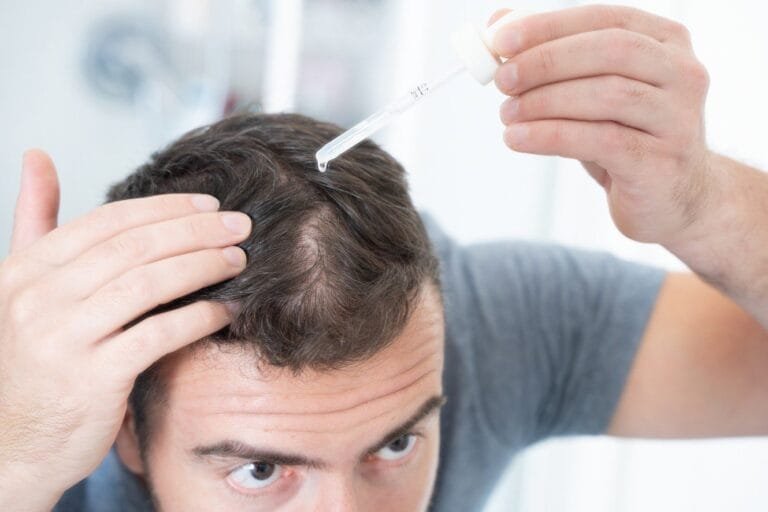How Many Grafts Lead to a Successful Hair Transplant?



The impact of hair loss on self-confidence and self-esteem can be profound. Fortunately, hair transplant procedures have gained popularity as an effective solution for hair restoration. Amidst the decision to undergo a hair transplant, the pivotal question arises: “How many grafts do I need for a successful hair transplant?” In this comprehensive guide, we will delve into the realm of hair transplants, explore the factors influencing graft counts, and uncover the key to achieving a successful hair transplant procedure.
Understanding Hair Transplant Procedures
Hair transplant procedures encompass advanced surgical techniques, involving the transfer of hair follicles from a donor area to the recipient area experiencing hair loss or thinning. These hair follicles, termed grafts, form the cornerstone of successful hair transplantation, relying on the surgeon’s skill and strategic graft placement for optimal results.
Deciphering Graft Count Requirements
Several factors influence the number of grafts required for a successful hair transplant:
- Severity of Hair Loss: The extent of hair loss in the recipient area plays a pivotal role. Patients with considerable hair loss may necessitate a higher graft count to achieve satisfactory coverage.
- Hair Characteristics: Hair thickness, texture, and curliness contribute to the appearance of fullness. Straight hair often provides superior coverage, while curly hair may necessitate more grafts to achieve similar density.
- Hair Density in the Donor Area: The density of hair in the donor area, typically located at the back or sides of the scalp, affects the availability of viable hair follicles for transplantation. A higher density in this region permits the harvesting of a larger number of grafts.
- Desired Hairline and Appearance: Individual preferences for the hairline shape and overall appearance impact the graft count. Attaining a natural-looking hairline requires meticulous planning and precise graft placement.
- Future Hair Loss Consideration: An adept hair transplant surgeon accounts for potential future hair loss, strategically planning graft distribution to ensure a natural and balanced look over time.
Consultation and Personalized Treatment Plan
Prior to undergoing a hair transplant procedure, it is imperative to schedule a consultation with a qualified and experienced hair transplant surgeon. During this consultation, the surgeon evaluates the patient’s hair loss pattern, hair characteristics, and overall scalp health.
Incorporating advanced technologies like digital imaging and 3D scalp mapping, a personalized treatment plan is meticulously crafted. Based on the evaluation, the surgeon discusses available options and provides an estimate of the grafts needed for a successful hair transplant.
The Hair Transplant Procedure
On the day of the hair transplant procedure, the patient receives local anesthesia to ensure comfort. Two primary techniques are employed for hair transplantation:
- Follicular Unit Transplantation (FUT): This method involves surgically removing a strip of scalp containing hair follicles from the donor area. The strip is then divided into individual grafts before being transplanted into the recipient area.
- Follicular Unit Extraction (FUE): In this technique, individual hair follicles are extracted directly from the donor area using a micro-punch tool. The follicles are carefully transplanted into the recipient area.
Strategic graft placement by the surgeon ensures natural hair growth patterns and a balanced appearance. The procedure duration may vary depending on the number of grafts required and the chosen technique.
What to Expect After the Procedure
After the hair transplant procedure, the transplanted hair typically sheds within a few weeks, making way for new hair growth from the transplanted follicles.
Within 6 to 12 months, significant hair growth becomes evident in the recipient area. The transplanted hair continues to grow naturally and can be styled, trimmed, and treated just like natural hair.
A successful hair transplant procedure, supported by the optimal number of grafts, can be a life-changing experience, restoring hair and confidence. Understanding the factors affecting graft counts and consulting with an experienced hair transplant surgeon are paramount to achieving the best results.
Take the first step toward a successful hair restoration journey by scheduling a consultation with Davis Cosmetic Plastic Surgery. Our experienced surgeon will create a personalized treatment plan using cutting-edge techniques to ensure natural-looking and fuller results. Bid farewell to hair loss worries – contact us now and embrace a new era of confidence with a successful hair transplant.






